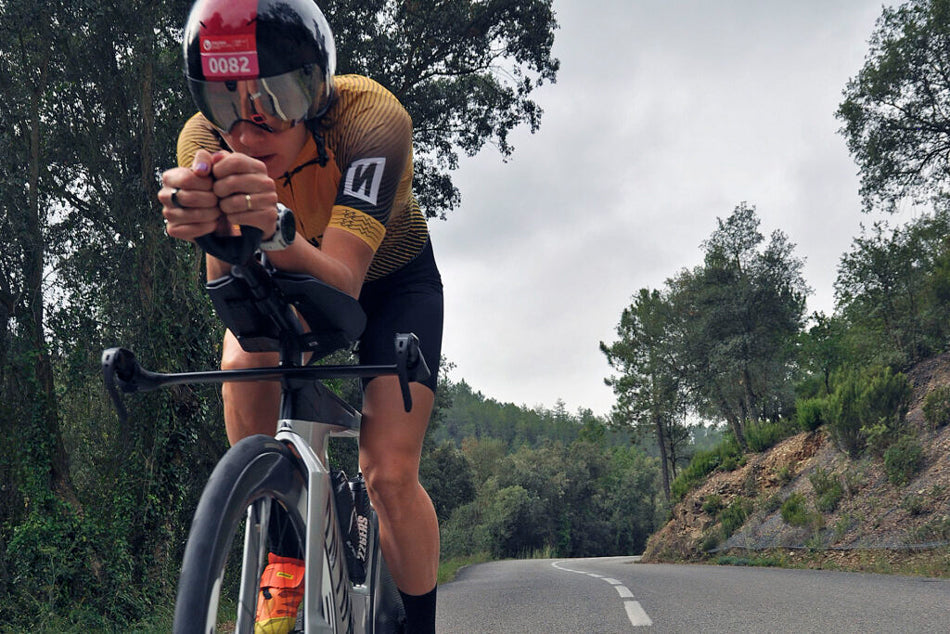
Half Ironman: Cycling Test for Speed at TrainingPeaks
Share
Not all triathletes have access to a power meter or heart rate sensor . For those just starting out or training with simpler equipment, average speed remains a useful metric—especially when used consistently and methodically .

In this article, we explain how to do a speed-based cycling test , how to analyze it in TrainingPeaks , and how it can help you improve your Half Ironman (70.3) performance.
The importance of speed as a metric
Average speed does not measure physiological effort or actual output (like watts), but it can serve as a practical reference for:
- Evaluate your progress over time
- Compare performance on different routes
- Estimate target paces for the race
- Plan steady-pace workouts
⚠️ Note: Speed is highly influenced by external factors such as wind, slope, traffic and type of surface.
When to use a speed test?
If you don't have access to power (FTP) or heart rate (HR) , this test is a valid alternative to understand:
- Your sustainable pace during continuous effort
- Your tolerance for fatigue during a prolonged session
- A reference value that you can repeat and compare
Half Ironman Speed Test Structure
This test simulates a time trial type effort, with a focus on maintaining constant speed and controlled effort .
✔ Requirements:
- Speed sensor (cyclometer, GPS or sports watch)
- Flat, safe route with minimal stops
- TrainingPeaks application for analysis
📋 Test structure (~60 minutes):
-
Warm-up (15-20 min)
- Pedal at an easy pace (Z1-Z2 if you use HR zones)
- Includes 3x1 min at a moderate pace with 1 min rest
-
Main test (30 minutes)
- Do 30 minutes at the most constant speed possible
- Imagine you're in a competition — strong but sustainable effort
- Avoids sudden braking or changes
-
Cooling down (10-15 min)
- Pedal gently to recover
How to analyze the test in TrainingPeaks
After syncing your workout with TrainingPeaks , you should check:
- Average speed during the main 30 minutes
- Speed trend (did you maintain or break?)
- Average cadence (if you have a sensor)
- Subjective notes: perception of effort, fatigue, control
🧠 Tip: Mark the 30 minutes in the TrainingPeaks editor as a manual “lap” for more accurate analysis.
How to use the results
The average speed over 30 minutes serves as a reference for future training. Example:
- If you averaged 32 km/h , your paced workouts could range from 28–30 km/h.
- For interval training, you can use blocks at 33–35 km/h (above threshold effort)
📈 Repeating this test every 6 to 8 weeks allows you to see progress and adjust target rhythms.
Advantages and limitations of speed testing
✅ Advantages:
- Simple to perform and analyze
- No need for advanced sensors
- Useful for beginners or training on flat roads
❌ Limitations:
- Very dependent on the route and weather conditions
- Does not reflect internal effort (fatigue, physiological stress)
- Less reliable on steep or windy trails
How to improve test accuracy?
- Always choose the same route
- Test under similar conditions (time of day, wind, temperature)
- Use tires with adequate pressure
- Try to minimize stops and intersections
- Ride in a stable, aerodynamic position (ideally on a triathlon or road bike)
Conclusion
While it's a basic metric, speed can offer valuable insights when used methodically and consistently . The TrainingPeaks Cycling Speed Test is an accessible tool for amateur triathletes who want to track their progress and set more effective paces for the Half Ironman .
If you train with limited resources , this test allows you to create a structured training plan, adapted to your level and reality.


